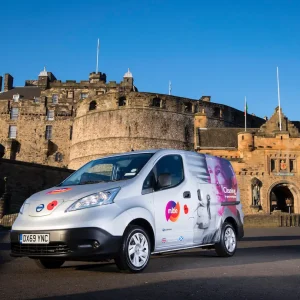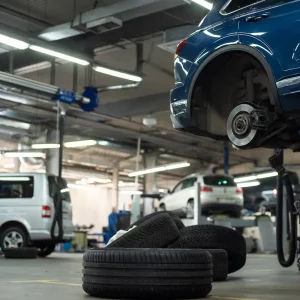
Businesses are increasingly ramping up their electric strategies as the new 2035 deadline looms; as of the end of December 2023, there are over 975,000 fully electric cars on UK roads, with 590,000 additional vehicles plug-in hybrids. However, the Office for Budget Responsibility (OBR) has halved the number of expected registrations from 67% to 38% in 2027. It comes as no surprise then that there are still many companies that either haven’t started electrification or are still in the early stages of adoption.
With that in mind, it’s important that we explore the perceived barriers to adoption to guide the nation towards the electric future. Cost is an easy argument and often seen as a big barrier – but buying an entirely new fleet and possibly charging infrastructure may be seen as an investment to this new way of mobility.
Today, however, I want to explore something a little more subtle: drivers might actually be reluctant to using EVs. After all, a study even surmised that ‘millions of Brits admit they hate change’, possibly even fear it. The same study also notes how those surveyed understand it can hold them back from new experiences and opportunities. Therefore, for companies that are about to begin the electric transition, it is important to understand why some drivers might want to put the brakes on your company’s electric future.
The two sides of ‘anti-EV sentiment’
There are two sides to arguments against using EVs commercially: a consumer perspective and a fleet perspective, both have their cases which need to be explored and challenged.
On the consumer side, a recent study flagged that drivers over age 55 are most reluctant to change to EV. The same research also argues that this is the bracket of the most ‘ideal EV buyers’ because they are more likely to earn more, own their own homes and potentially have the off-street space for a home charge point. Their concerns are typical when dealing with EV reluctance – price, range, the availability of charging, and the process of installing. But while younger people may have overcome these realisations, older generations seem to be hanging onto them. This becomes a concern for businesses because drivers are typically older: the average age of delivery drivers is 45 or older. This means that a large part of a fleet’s drivers are likely to be from the demographic that has the most reluctance to use EV technology, and they might carry that reluctance to the workplace.
However, fleet drivers aren’t dealing with the same concerns as their consumer counterparts – they don’t need to pay for their vehicles, nor charging (for the most part). They do however have to operate the vehicles and keep them charged, and this could be difficult to adapt to after decades of using internal combustion engine (ICE) vehicles. Although they may have their own homes and might be more able to install home charge points, they may not want to use their driveway for their work vehicle or have their home be permanently altered for their work. To go a step further, a fleet driver may have a fuel card they use out on the road but might worry about how they will be reimbursed for any charging they complete at home – possibly fearing they may end up out of pocket.
Exploring charging
One of the most prevalent and enduring concerns surrounding the adoption of EVs revolves around the challenge of locating convenient charging stations. Traditional fuel stations are abundant, but the awareness of a well-established and expansive charging infrastructure in the UK might not be readily apparent, especially outside of major urban centres. However, it’s important to note that the UK boasts a robust and continually expanding network of high-speed chargers, with new additions becoming operational regularly.
Let’s delve into the dynamics of EV charging both on the road and at home:
Charging an EV at public stations tends to be relatively more expensive compared to charging at home. In the past eight months alone, these costs have risen by 58%. This shift has seemingly tipped the scale, making EVs appear at present to be more costly for long-distance travel compared to traditional ICE vehicles.
That being said, for personal or commercial EVs, charging at home proves to be more cost-effective leading to a greater variability in the cost-per-mile (CPM) for EV drivers over short time periods than for conventional ICE vehicle drivers. It’s also worth noting that the current price of EV charging might not persist – the RAC had called for a reduction to the charging VAT rate to 5%, and September marked the first month last year that we did not see a price increase. Secondly, factors such as reduced maintenance expenses and exemptions from charges in low-emission zones contribute to long-term cost savings for EV drivers.
Energy prices are a hot topic this year, so drivers are right to be cautious about the expense. Despite this, charging an EV still remains a cheaper option, if charging at home. The price per kilowatt hour (kWh) of electricity is around 32p per kWh so completely recharging a 60Kw battery would cost £17.00, providing on average 200 miles of range, costing around 8p per mile. To compare, a car doing 300 miles at 45mpg using petrol costing around 140p a litre would cost around £45.48, or 15p per mile.
Reassurance when going electric
I want to make clear that it’s not all doom and gloom. I’ve explored a challenge here around driver reluctance but that’s not to say that this is the case across the board. For those drivers that are receptive, now is the time to capitalise in getting set up and mobile with EVs. Happy drivers that have simple processes and solutions in place to operate and recharge their vehicles could breed across the entire fleet, further helping the overall transition.
Speaking of which, it’s clear that companies across the UK are at very different stages of their fleet transition and drivers are at various stages of their confidence in operating EVs, as well as the overall electric future.
To grow driver confidence, the answer lies in making life simple for them both on the road and at home, ensuring they are not out of pocket for their recharging and always have access to a charge point when out on the road – a seamless experience that anyone, no matter what their experience, can adapt to.
Ashley Tate is managing director of Allstar Chargepass UK





